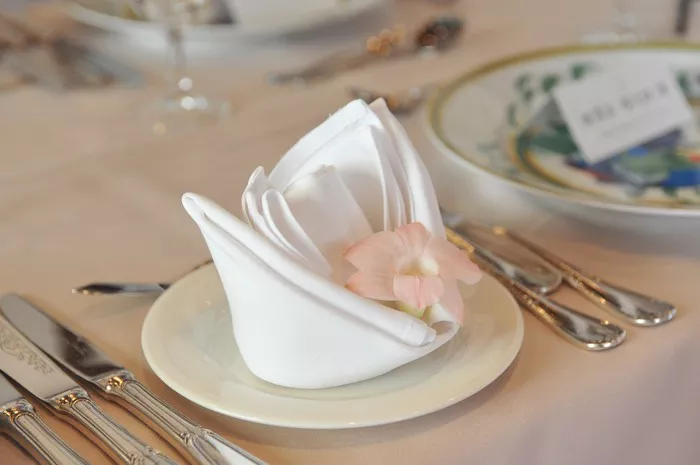The wedding catering industry is undergoing a dramatic transformation as couples move beyond traditional plated dinners and predictable buffets to create dining experiences that reflect their personalities, cultural backgrounds, and culinary passions. Today’s wedding menus tell stories, spark conversations, and engage all five senses—turning what was once a formality into one of the most memorable aspects of the celebration. From hyper-local farm-to-table feasts to interactive food stations that double as entertainment, catering has become a central element of wedding design rather than an afterthought.
One of the most significant shifts is the rise of “culinary storytelling,” where each course represents a chapter in the couple’s relationship. New York-based catering company Narrative Plates specializes in designing menus that incorporate meaningful flavors and ingredients. “We recently created a seven-course menu where each dish represented a different city a couple had lived in during their long-distance relationship,” explains founder Chef Marcus Langley. “A Nashville hot chicken bite for where they met, a mini Boston clam chowder for their first vacation together, ending with a Chicago-style chocolate cake for their engagement.” These personalized menus often come with custom-printed story cards at each place setting, turning dinner into an intimate sharing experience.
Sustainability has become non-negotiable for environmentally conscious couples, leading to innovative approaches like “root-to-stem” cooking. California caterers The Green Kitchen have developed a zero-waste wedding menu where every part of the ingredient gets used—carrot tops become pesto, melon rinds transform into pickles, and coffee grounds from the espresso bar get baked into the wedding cake. Their seasonal feasts feature ingredients sourced from within 50 miles, served on compostable palm leaf plates with edible cutlery made from wheat and rice flour. “Our clients love that their wedding meal actually benefits local farms rather than generating tons of landfill waste,” says owner Sofia Mendes. Even cocktail hours are getting eco-makeovers, with sustainable seafood towers and “farmers market” martini garnishes replacing traditional shrimp cocktails.
Interactive food experiences now dominate reception trends, turning meals into participatory events. Chicago’s Feast & Flow creates culinary “performance stations” where chefs prepare dishes tableside with dramatic flair—flaming cheese wheels for pasta, liquid nitrogen ice cream bars, or sushi rolled to order on slabs of Himalayan salt. Their most requested station is a “build-your-own” gourmet grilled cheese bar featuring artisanal breads and 15 cheese varieties melted with mini blowtorches. “Guests remember these interactive moments long after they’ve forgotten what song played during the first dance,” notes creative director Amir Patel. Some couples take this further by incorporating family recipes into live cooking demonstrations—grandmother’s secret sauce simmering in a vintage pot or dad’s famous barbecue technique taught by professional chefs.
Cultural fusion catering is exploding as multicultural couples blend culinary traditions in creative ways. Miami’s Cocina de Amor specializes in “hybrid heritage” menus like Cuban-Japanese (mojo-marinated tuna poke), Italian-Indian (saffron risotto with curry foam), or Jewish-Mexican (latke nachos). Their team works with families to respectfully modernize traditional dishes—one recent wedding featured a Filipino lechon roast carved alongside a Southern whole hog barbecue, representing both sides of the couple’s heritage. “Food becomes the bridge between cultures,” says chef Lourdes Santiago. “We’ve seen tears when grandparents taste familiar flavors presented in new ways that honor both past and future.”
Dietary considerations have evolved beyond basic vegetarian options to fully inclusive menus. Top caterers now routinely accommodate keto, paleo, gluten-free, and allergen-sensitive guests without compromising on flavor or presentation. Boston’s Harmony Catering has developed an entire “universal dining” program where every dish meets multiple dietary needs naturally—a far cry from the sad “special meals” of weddings past. Their signature “rainbow plate” features seven vegetable preparations with optional protein additions, appealing to vegans and meat-lovers alike while being free from top allergens. “Modern couples want everyone to feel equally celebrated at their table,” explains nutrition director Rachel Kim.
As wedding catering becomes more experiential, some couples are investing as much in their menu as their venue. The average spend on catering has increased 40% over the past five years, with luxury weddings often allocating $200-$500 per guest for truly extraordinary dining. From truffle hunting stations to champagne pairings with each course, today’s wedding feasts are rivaling Michelin-starred restaurant experiences—and creating delicious memories that last long after the last bite.

